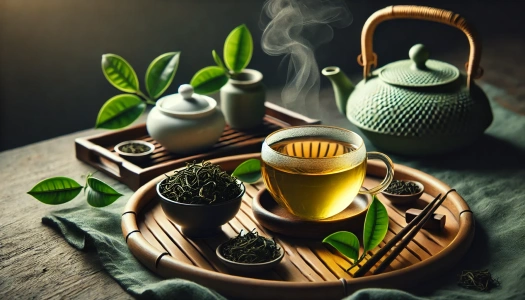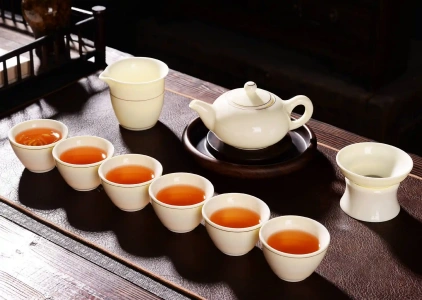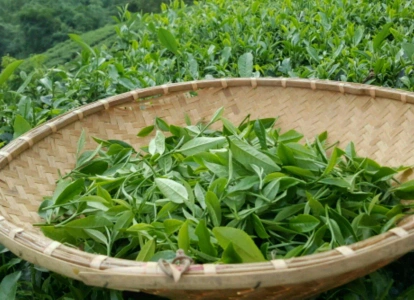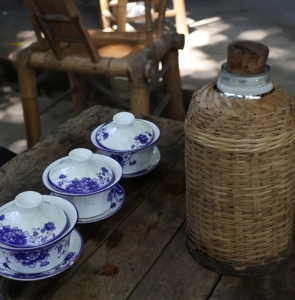
The story of Chinese tea begins with ancient legends, such as the tale of Emperor Shen Nong discovering tea when leaves fell into boiling water. Green tea, one of the earliest types, gained popularity during the Tang Dynasty. Over time, tea evolved into a treasured symbol of Chinese culture, expanding its influence to trade, art, and daily life, shaping traditions that persist to this day.
Tea holds a profound place in Chinese culture, symbolizing hospitality, respect, and harmony. It is central to traditional ceremonies, reflecting the values of balance and mindfulness. Beyond formal occasions, tea is an integral part of daily life, enjoyed for its comforting warmth and as a medium for social connection and thoughtful reflection.

Green tea is perhaps the most iconic of Chinese teas, known for its delicate flavors and health benefits. Varieties like Longjing (Dragon Well) and Biluochun are celebrated for their distinctive tastes and aromas. Traditional brewing methods preserve its antioxidants, offering wellness benefits that align with its reputation as a staple in both daily life and fine dining.

Beyond green tea, China’s rich tea culture includes black tea, such as Lapsang Souchong, known for its smoky flavor; Oolong teas like Tieguanyin and Da Hong Pao, prized for their complexity; and the subtle elegance of white teas. These varieties showcase the diversity of Chinese tea, each offering unique flavors and cultural significance.
The Chinese tea ceremony is a carefully choreographed process emphasizing grace and mindfulness. From warming the pot to pouring tea, every step highlights the tea’s aroma and taste. This ritual reflects deep cultural and spiritual values, fostering appreciation for simplicity and harmony, while connecting participants to centuries-old traditions.
A successful tea ceremony requires essential tools, including teapots, cups, and trays often crafted from porcelain or clay. These items enhance the tea’s flavor and aroma. Selecting the right tea set complements the ceremony’s elegance, making it both an art form and a cultural experience.
Green tea is celebrated for its high levels of antioxidants, which promote overall health by combating free radicals. These compounds may reduce the risk of chronic illnesses and support mental clarity. Other teas, such as Pu’er and white tea, also offer unique health benefits, showcasing tea’s natural role in wellness.
Incorporating Chinese tea into meals is a delightful way to enhance flavors and support digestion. Green tea pairs well with traditional dishes and can be enjoyed at green tea Chinese restaurants. For a cozy experience, visit a tea house Chinese restaurant to explore curated tea-and-food pairings.
When selecting a Chinese tea set, consider materials like porcelain for elegance, clay for enhanced flavor, or glass for modern aesthetics. Sets designed for daily use differ from ceremonial styles, offering versatility for casual tea drinking or special occasions, ensuring you enjoy tea with authenticity.
Proper care ensures the longevity of your tea set. Clean teapots and cups with warm water to avoid residue buildup and store them in a dry space to prevent cracking. This simple maintenance preserves the beauty and functionality of your cherished tea tools.
Traditional Chinese tea houses offer an immersive experience with authentic tea and snacks. Visitors can savor premium teas while appreciating the serene ambiance. Renowned tea houses in cities like Hangzhou and Chengdu showcase China’s rich tea heritage, making them must-visit destinations for enthusiasts.

Begin your tea-tasting journey with lighter teas, such as green or white tea, to familiarize yourself with their subtle notes. Gradually explore robust flavors like Oolong or black tea. Pay attention to aroma, taste, and aftertaste to deepen your appreciation for each variety.
China’s famous tea regions include Zhejiang, home to the renowned Dragon Well tea; Fujian, celebrated for Oolong and white teas; and Yunnan, famous for Pu’er tea. Each region’s unique climate and geography contribute to the distinctive characteristics of its teas, making them prized worldwide.
When purchasing authentic Chinese tea, look for reputable sellers specializing in high-quality products. Visiting local markets or trusted online stores ensures you get genuine tea. Check for certifications and detailed product descriptions for the best experience.
Store tea in an airtight container to preserve its aroma and flavor. Keep it in a cool, dark place away from moisture and strong odors. Proper storage maintains tea’s quality, ensuring every brew is as fresh as the first.
Discover rich Chinese traditions and cultural practices through festivals, customs, and history.
